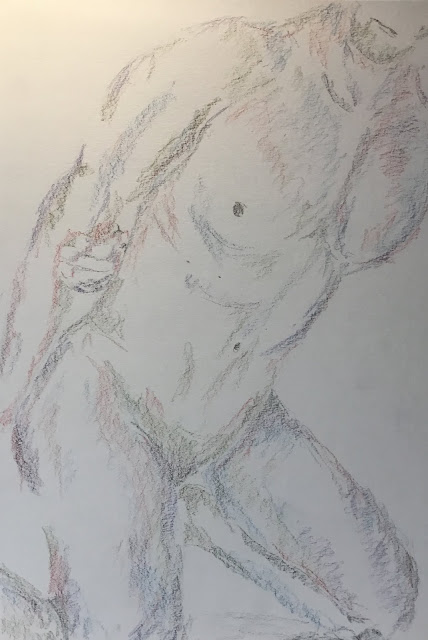A blog to show off the work of the Artistic Actuary. With the odd book review thrown in.
Media and subjects
- Watercolour (359)
- Landscapes (279)
- Portraits (245)
- Markers (137)
- Figures (117)
- Inktense Pencils (105)
- Abstract/Crazy (64)
- Supergranulators (59)
- Oil pastels (49)
- Coloured Pencils (45)
- Posterised Style (42)
- Inks (27)
- Series/Collections (21)
- Artgraf (19)
- Dash & Splash (18)
- Crackle Paste (10)
- Charcoal (9)
- Pencil (8)
- Collage (5)
- Jig-Art (4)
Friday 28 May 2021
Margaret
Kevin At The Interview
Thursday 27 May 2021
I Said In That Case I'll Have A Manhattan. She Said Fine. And In Thirty Seconds Time...
Thursday 20 May 2021
Glean a'Chroin
Tuesday 18 May 2021
The Joy Of Six
Monday 17 May 2021
Annual Self Portrait 2021
Pulling Your Paintings Together, Charles Reid - Book Review
Saturday 15 May 2021
Ten Greatest Chess Players
Continuing to experiment, today I'm trying two new approaches with the new drawing technique: multiple portraits crammed together and combining this with the use of inktense pencils.
As material, I used ten great chess players, most of them not still playing, let alone still with us. Let's go through them first and talk about likenesses. So, left to right along the top row, then the bottom row:
- Bobby Fischer looks good - there's a likeness there.
- Paul Morphy - not as good but still a likeness
- Tigran Petrosian - pretty bad. I can tell it's him but I can also see a lot that's wrong.
- Mikhail Tal - there's a likeness but it's a cartoony caricature. Looks like a Simpsons villain.
- Magnus Carlsen - terrible, unrecognisable
- Jose Capablanca - I've caught the softness of the eyes but nothing else
- Gary Kasparov - no, not got him. Looks more like a Nigel Short.
- Boris Spassky - again, no
- Emmanuel Lasker - ok but it's difficult to not get a likeness with a face like that
- Anatoly Karpov - another bad one
So likenesses are generally not there. Bit how did the two experiments work out?
I think the concept of multiple portraits with overlaps is a winner. Maybe the best approach is to decide first which are most important, draw them in, then add all the rest afterwards wherever there are gaps. Overlaps are not a problem - they add some energy and fun.
And the inktense pencils? They work but I could have done better. I started by choosing and colouring loots of black areas - black and white has to work for chess players, doesn't it? But then I thought the space above Tal's head looked a bit empty, so coloured that in red, adding some more red in other places to balance it. And then I added some blues in places. It's come out OK but I can't help thinking this would have looked better with a lot more white on the page and very little blue and red (if any).
Still, there's a good feeling to this one. You can feel the concentration. It's going up for sale.
Friday 14 May 2021
Jimi Hendrix
I painted this one while Neil Young was drying. The skin tones are again in Winsor red, cerulean blue and either raw sienna or yellow ochre or both. I'd worked from a black and white photo so had no idea what colour the T-shirt should be. So I just used loads of different colours. I also used these colours fairly randomly in Jimi's hair and in the background.
At the end, rather than adding salt, I spattered over Winsor red, cerulean blue and yellow ochre. These came out as strings rather than spatters, some of them even winding around the guitar neck, so it,s as if they're musical notes.
This is definitely better than the Neil Young from earlier. Unless it gets loads of likes and positive feedback on Facebook, it's not going up for sale though.
I'm also thinking that, at least for portraits like this of individuals, I should do the drawing with pencil rather than pen. Pen would work, though, for urban sketching of buildings or groups of people.
Neil Young
Duane Allman & Sam Allardyce
I'm going to try out something new this morning. I'm going to start with a Charles Reid style contour drawing. He recommends starting from the eyes, keeping the pen on the paper at all times and feeling free to get distracted by interesting internal shapes. I'm going to do this on watercolour paper and add some paint. But watercolour paper is expensive, so I thought I'd have a practice run on a scrap of printer paper first.





















